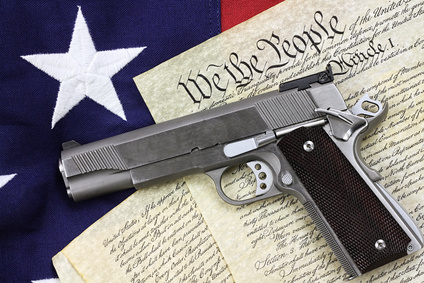Keeping A Written Record of Your Firearms
There are a number of good reasons for keeping a personal gun log separate and distinct from your business ATF log book. But, why would you keep a written record of private gun collections, especially if the firearms were acquired before being licensed? Well, what you may want to ask yourself is if there are really any good reasons not to do it; especially if it’ll save you the trouble of having to segregate your firearms or put unattractive tags on otherwise attractive guns that are on display. Below you’ll find some good reasons to keep a separate gun record book, or create a separate section in your ATF log book for your private firearm collection. These methods are especially beneficial to home based FFLs for obvious reasons.
What ATF Recommends
ATF recommends segregating and tagging firearms “not for sale”(Industry Circular 72-30) in cases where FFLs keep privately owned guns on their business premises. This is fine, depending on your interpretation of “segregate”, and supposing your tags never fall off or are inadvertently pulled off your firearms. Having a discussion about the true definition of “segregated” or trying to explain how your tags just happen to fly off your private firearms and get lost might be fun for you, but the ATF investigator (IOI) in the midst of conducting an inspection may not have your sensibilities about those topics at that particular time.
Protecting Your Firearms Business
What you should be interested in as an FFL and a business person, is protecting yourself and your business from any unnecessary entanglements with regulatory authorities. So it’s important that the steps you take to distinguish your personal firearms collection form your business inventory clearly make that distinction. Your efforts should ensure that no possibility of a subjective assessment by an ATF investigator could result in a record keeping violation.
ATF will always consider firearms within your business premises as inventory that should be reflected in the record of acquisition and disposition of firearms. During a compliance inspection, if firearms are found on your premises, the ATF IOI will expect to see that firearm entered in your ATF logbook. You can imagine the confusion that might ensue if you would say “that’s a personal firearm” in each case of a firearm not being logged.
FFL Bound Books
The solution is fairly simple, and easy to implement. One method is to create a section in your current ATF record of acquisition and disposition, and clearly indicate that firearms in that section are “personal, and not part of business inventory”. Otherwise, you can have a separate ATF log book which also clearly identifies the firearms documented in it are “personal collection”. By following this system, you ensure all firearms on the premises are documented in a record. By implementing this simple strategy, you’ve maintained the traceability and integrity of your entire inventory, and have indicated to any authority, that you have good business practices and internal controls.
You’ve also made a detailed record of firearms that are obviously valuable to you. In the unfortunate event of a theft, you’ll have a detailed record for insurance purposes and details that can be reported to the police to possibly assist in the recovery of those firearms, and return to you. There are some things that you should be aware of also; such as the proper way to dispose of firearms from a “personal collection”, and the proper methods of transferring firearms to yourself if your business is incorporated. Consult the Federal Firearms Regulations Reference Guide (2005) or the ATF website for further on those issues.
JR Valdes, Firearms Licensing And Consulting Group, LLC
Copyright 2014 FFLConsultingGroup.com. See “legal” section above for detailed legal information.

